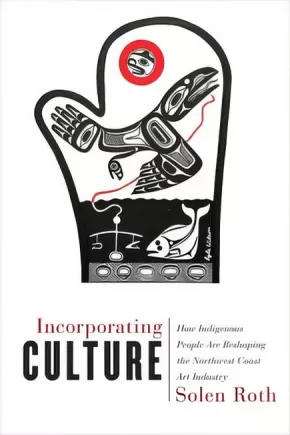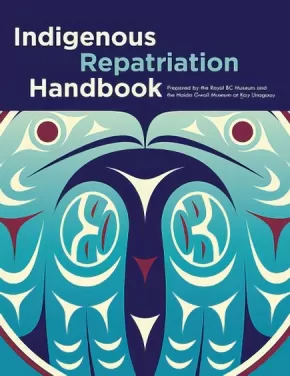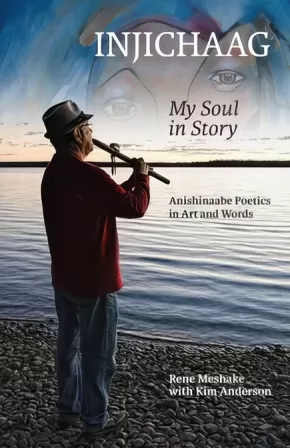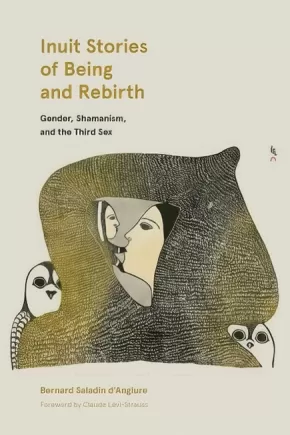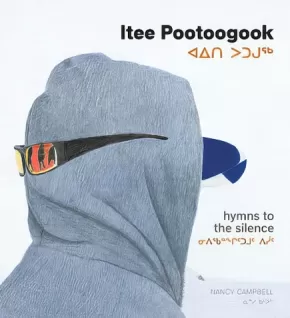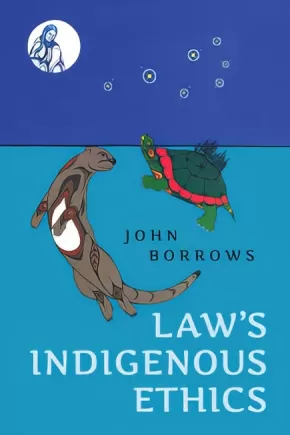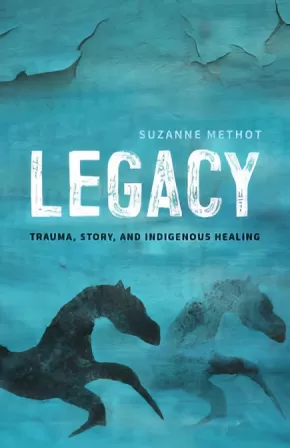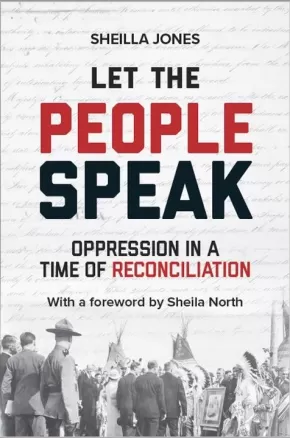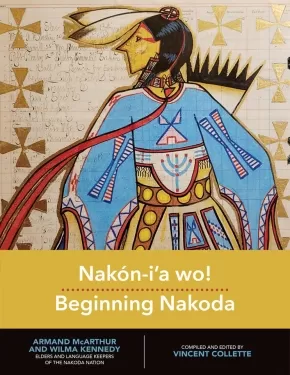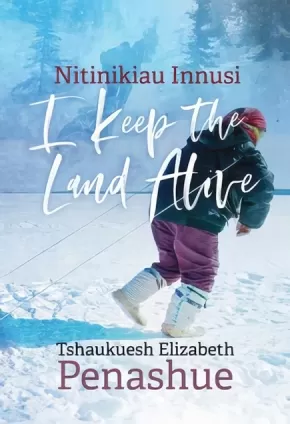
Indigenous Peoples in Canada
391
-
405
of
564 Results;
Sort By
Go To
of 38
Incorporating Culture: How Indigenous People Are Reshaping the Northwest Coast Art Industry
$32.95
Format:
Paperback
Text Content Territories:
Indigenous Canadian;
Grade Levels: University/College;
ISBN / Barcode: 9780774837392
Synopsis:
Synopsis:
Fragments of culture often become commodities when the tourism and heritage business showcases local artistic and cultural practice. And frequently, this industry is developed without the consent of those whose culture is being commercialized. What does this say about appropriation, social responsibility, and intercultural relationships? And what happens when local communities become more involved in this cultural marketplace?
Based on eighteen months of ethnographic fieldwork, Incorporating Culture examines how Northwest Coast Indigenous artists and entrepreneurs are cultivating more equitable relationships with the companies that reproduce their designs on everyday objects. Focusing on the vibrant Indigenous art industry in Vancouver, Solen Roth details how artists are slowly but surely modifying an essentially capitalist market to reflect Indigenous models of property, relationships, and economics.
Moving beyond the assumption that the commodification of Indigenous culture is necessarily exploitative, Incorporating Culture discusses how communities can treat culture as a resource in a way that nurtures rather than depletes it. From this fresh perspective, Roth sheds light on the processes by which Indigenous people have been asserting control over the Northwest Coast art industry – not by shutting the market down but by reshaping it in order to reflect their communities’ values and ways of life.
Scholars and students in a broad range of disciplines who are interested in the relationship between commerce and Indigenous art and design will find this book illuminating, as will thoughtful participants in the Indigenous art market.
Reviews
"Roth takes a refreshing approach to Northwest Coast art. It does not privilege the historical, nor the fine art market or ceremonial art. Rather, Roth takes seriously the artware made to leave Indigenous communities. She makes a compelling case for reframing the ‘souvenir’ art market on the Pacific Coast as ‘culturally modified capitalism,’ in which Indigenous stakeholders actively shape this industry in locally meaningful ways through intensive engagement with provincial, federal, and global systems." - Cara Krmpotich, associate professor, Faculty of Information, University of Toronto
"There is no other book on Native American art like Incorporating Culture. It brings forward new and fascinating perspectives on the myriad examples of Northwest Coast First Nations artware seen in shops, revealing the strength of Northwest Coast values and practices as they penetrate and influence what might be seen from the outside as a strictly capitalist venture." - Aldona Jonaitis, director, University of Alaska Museum of the North
Educator Information
Useful for these subject areas: Indigenous Studies, Art History, Cultural Studies, Anthropology, Indigenous Art
Additional Information
240 pages | 6.00" x 9.00"
Indigenous Peoples and Dementia: New Understandings of Memory Loss and Memory Care
$32.95
Format:
Paperback
Text Content Territories:
Indigenous American; Indigenous Canadian;
Grade Levels: University/College;
ISBN / Barcode: 9780774837842
Synopsis:
Synopsis:
Dementia is on the rise around the world, and health organizations in Canada, the United States, and New Zealand are responding to the urgent need – voiced by communities and practitioners – for guidance on how best to address memory loss in Indigenous communities. This innovative volume responds to the call by bringing together, for the first time, research studies and Indigenous teaching stories on this topic. Using decolonizing methods, it addresses key areas of concern with chapters that:
- examine the prevalence and causes of dementia, as well as the public discourse surrounding the issue
- provide examples for incorporating Indigenous perspectives on care and prevention into research and practice
- demonstrate culturally safe applications of research to Elder care.
Presenting strategies for health practice and effective collaborative research informed by Indigenous knowledge and worldviews, this book is a valuable resource for researchers, practitioners, students, and educators who seek a better understanding of memory loss and memory care.
This book will be of interest to students, educators, researchers, and practitioners working in or interested in the fields of dementia studies and Indigenous health.
Reviews
"This book represents the first significant contribution to what we know about how Indigenous peoples understand dementia and memory loss." - from the foreword by Rod McCormick (Kanienkehaka), professor and British Columbia Innovation Council research chair in Aboriginal Health, Faculty of Education and Social Work, Thompson Rivers University
"A leap forward in understanding how health care can be provided in culturally safe ways." - Lloy Wylie, assistant professor, Schulich School of Medicine and Dentistry, Western University
Educator Information
Table of Contents
Foreword / Rod McCormick
Introduction / Wendy Hulko, Jean E. Balestrery, and Danielle Wilson
We Call It Healing / Secwepemc Elder, Wendy Hulko, Danielle Wilson, Star Mahara, Gwen Campbell-McArthur, Jean William, Cecilia DeRose, and Estella Patrick Moller
Part 1: Prevalence, Causes, and Public Discourse
1 Current and Projected Dementia Prevalence in First Nations Populations in Canada / Jennifer Walker and Kristen Jacklin
2 Indigenous Vascular Dementia: An Indigenous Syndemic Dementia Model / J. Neil Henderson, Linda D. Carson, and Kama King
3 A Story about Joe in the News Media: Decolonizing Dementia Discourse / Suzanne MacLeod
Coyote: Keeper of Memories / Danielle Wilson, Gwen Campbell-McArthur, Wendy Hulko, Star Mahara, Jean William, Cecilia DeRose, and Estella Patrick Moller
Part 2: Indigenous Perspectives on Care and Prevention
4 Perceptions of Dementia Prevention among Anishinaabe Living on Manitoulin Island / Jessica E. Pace, Kristen Jacklin, Wayne Warry, and Karen Pitawanakwat
5 The Understanding from Within Project: Perspectives from Indigenous Caregivers / Carrie Bourassa, Melissa Blind, Kristen Jacklin, Eric Oleson, and Kate Ross-Hopley
6 Oldest Age Does Not Come Alone: “What’s the Name of the Day?” / Mere Kēpa
A Fecund Frontier: We Listen ... in between Talk ... We Listen / Jean E. Balestrery and Sophie “Eqeelana Tungwenuk” Nothstine
Part 3: Applying Theory and Knowledge to Practice
7 Depression, Diabetes, and Dementia: Historical, Biocultural, and Generational Factors among American Indian and Alaska Native Elders / Linda D. Carson, J. Neil Henderson, and Kama King
8 Adapting CIRCA-BC in the Post-Residential-School Era / Barbara Purves and Wendy Hulko
9 Focus(ing) on Love and Respect: Translating Elders’ Teachings on Aging and Memory Loss into Learning Tools for Children and Youth / Wendy Hulko, Danielle Wilson, and Jessica Kent
Conclusion / Wendy Hulko, Jean E. Balestrery, and Danielle Wilson
Index
Additional Information
264 pages | 6.00" x 9.00"
Indigenous Relations: Insights, Tips & Suggestions to Make Reconciliation a Reality
$19.95
Format:
Paperback
Text Content Territories:
Indigenous Canadian; First Nations; Inuit; Métis;
ISBN / Barcode: 9781989025642
Synopsis:
Synopsis:
Indigenous Relations: Your Guide to Working Effectively with First Nations, Métis, and Inuit.
A timely sequel to the bestselling 21 Things You May Not Know About the Indian Act - and an invaluable guide for anyone seeking to work more effectively with Indigenous Peoples.
We are all treaty people. But what are the everyday impacts of treaties, and how can we effectively work toward reconciliation if we're worried our words and actions will unintentionally cause harm?
Hereditary chief and leading Indigenous relations trainer Bob Joseph is your guide to respecting cultural differences and improving your personal relationships and business interactions with Indigenous Peoples. Practical and inclusive, Indigenous Relations interprets the difference between hereditary and elected leadership, and why it matters; explains the intricacies of Aboriginal Rights and Title, and the treaty process; and demonstrates the lasting impact of the Indian Act, including the barriers that Indigenous communities face and the truth behind common myths and stereotypes perpetuated since Confederation.
Indigenous Relations equips you with the necessary knowledge to respectfully avoid missteps in your work and daily life, and offers an eight-part process to help business and government work more effectively with Indigenous Peoples - benefitting workplace culture as well as the bottom line. Indigenous Relations is an invaluable tool for anyone who wants to improve their cultural competency and undo the legacy of the Indian Act.
Educator Information
Recommended in the Canadian Indigenous Books for Schools 2020/2021 resource list for grades 11 and 12 in these areas: Social Studies, Law, English Language Arts, and Social Justice.
Additional Information
200 pages | 8.00" x 5.00"
Indigenous Repatriation Handbook
$29.95
Format:
Paperback
Text Content Territories:
Indigenous Canadian;
Grade Levels: University/College;
ISBN / Barcode: 9780772673176
Synopsis:
Synopsis:
A reference for BC Indigenous communities and museums, created by and for Indigenous people working in repatriation.
"Our late friend and brother Rod Naknakim said, 'Reconciliation and repatriation cannot and should not be separated. The two must anchor our conversation and guide our efforts as we move forward collectively with common purpose and understanding.'" - Dan Smith, BCMA Indigenous Advisory Chair, Nuyumbalees Cultural Centre
We are in a new era of reconciliation that involves repatriation - the return of Indigenous objects and Ancestral remains to their home communities - and the creation of meaningful relationships between museums and Indigenous communities. This handbook, the first to be created by and for Indigenous people, provides practical information that will enable each of the 34 unique Indigenous language and cultural groups in BC to carry out the process of repatriation in ways that align with the cultural traditions of each respective community. It also provides information that will be helpful to museums, and to Indigenous communities across Canada.
Educator Information
Acknowledgements vii
Message from Lucy Bell, Head of the Indigenous Collections and
Repatriation Department, Royal BC Museum ix
Message from Professor Jack Lohman CBE, Chief Executive Officer,
Royal BC Museum, and Tracey Herbert, CEO, First Peoples’
Cultural Council x
Part 1: Introduction 1
Part 2: Organizing a Successful Repatriation 13
Part 3: Conducting Research 29
Part 4: Repatriation from the Royal BC Museum 39
Part 5: Repatriation from Other Institutions 49
Part 6: For Institutions Wishing to Repatriate to Indigenous Peoples in BC 61
Part 7: Case Study: Repatriation Journey of the Haida Nation 67
Appendix A: Glossary of Terms 74
Appendix B: Indigenous Museums and Cultural Centres in Canada 77
Appendix C: Organizational Templates, Procedures and Examples 80
Appendix D: Fundraising Resources 98
Appendix E: Sample Letters to Museums 105
Appendix F: Tips for Planning for Travel and Transport 111
Appendix G: Global Museums with Major Indigenous Collections from BC 116
Appendix H: Resources on Education in Indigenous Museology 150
Appendix I: Frequently Asked Questions about Repatriation 154
Appendix J: Repatriation Success Stories 158
Additional Information
174 pages | 8.50" x 10.98"
Injichaag: My Soul in Story: Anishinaabe Poetics in Art and Words
$24.95
Format:
Paperback
Text Content Territories:
Indigenous Canadian; First Nations; Anishinaabeg; Ojibway;
Grade Levels: University/College;
ISBN / Barcode: 9780887558481
Synopsis:
Synopsis:
This book shares the life story of Anishinaabe artist Rene Meshake in stories, poetry, and Anishinaabemowin “word bundles” that serve as a dictionary of Ojibwe poetics. Meshake was born in the railway town of Nakina in northwestern Ontario in 1948, and spent his early years living off-reserve with his grandmother in a matriarchal land-based community he calls Pagwashing. He was raised through his grandmother’s “bush university,” periodically attending Indian day school, but at the age of ten Rene was scooped into the Indian residential school system, where he suffered sexual abuse as well as the loss of language and connection to family and community. This residential school experience was lifechanging, as it suffocated his artistic expression and resulted in decades of struggle and healing. Now in his twenty-eighth year of sobriety, Rene is a successful multidisciplinary artist, musician and writer. Meshake’s artistic vision and poetic lens provide a unique telling of a story of colonization and recovery.
The material is organized thematically around a series of Meshake’s paintings. It is framed by Kim Anderson, Rene’s Odaanisan (adopted daughter), a scholar of oral history who has worked with Meshake for two decades. Full of teachings that give a glimpse of traditional Anishinaabek lifeways and worldviews, Injichaag: My Soul in Story is “more than a memoir.”
Awards
- 2020 Indigenous Voices Awards Winner for Works in an Indigenous Language
Reviews
“This is the story of an Anishinaabe journey across time and space. This is more than an autobiography of trauma, it is a celebration of resilience.”– Margaret Noodin, Associate Professor, English and American Indian Studies, University of Wisconsin-Milwaukee
Educator Information
Table of Contents
Invocation
Family Tree
Community Tree
Introduction
Section 1 Odinimanganikadjigan
Section 2 Nibinaabe
Section 3 Wikwedong
Section 4 Bimisi
Section 5 Miskwadesshimo
Section 6 Papawangani
Section 7 Migisiwiganj
Epilogue
Additional Information
240 pages | 5.50" x 8.50"
Inuit Stories of Being and Rebirth: Gender, Shamanism, and the Third Sex
$31.95
Format:
Paperback
Text Content Territories:
Indigenous Canadian; Inuit;
Grade Levels: University/College;
ISBN / Barcode: 9780887558306
Synopsis:
Synopsis:
The small island of Igloolik lies between the Melville Peninsula and Baffin Island at the northern end of Hudson Bay north of the Arctic Circle. It has fascinated many in the Western world since 1824, when a London publisher printed the narratives by William Parry and his second-in-command, George Lyon, about their two years spent looking for the mythical Northwest Passage.
Nearly a hundred and fifty years later, Bernard Saladin d’Anglure arrived in Igloolik, hoping to complete the study he had been conducting for nearly six months in Arctic Quebec (present-day Nunavik). He was supposed to spend a month on Igloolik, but on his first morning there, Saladin d’Anglure met the elders Ujarak and Iqallijuq. He learned that they had been informants for Knud Rasmussen in 1922. Moreover, they had spent most of their lives in the camps and fully remembered the pre-Christian period.
Ujarak and Iqallijuq soon became Saladin d’Anglure’s friends and initiated him into the symbolism, myths, beliefs, and ancestral rules of the local Inuit. With them and their families, Saladin d’Anglure would work for thirty years, gathering the oral traditions of their people.
First published in French in 2006, Inuit Stories of Being and Rebirth contains an in-depth, paragraph-by-paragraph analysis of stories on womb memories, birth, namesaking, and reincarnation. This new English edition introduces this material to a broader audience and contains a new afterword by Saladin d’Anglure.
Contents
Ch. 1—Savviurtalik is Reincarnated
Ch. 2—Inuit Genesis and the Desire for Children
Ch. 3—‘Big Belly’
Ch. 4—Incestuous Moon Brother chases Sun Sister
Ch. 5—A Headstrong Daughter
Ch. 6—A Cheated Husband
Ch. 7—Girls Should not Play at Marriage
Ch. 8—A Battered Wife
Ch. 9—Walrus Skin, a Mistreated Orphan, Rescued by the Moon Man
Ch. 10—The Danger of Being Impregnated by a Spirit
Ch. 11—The First Woman Healer
Ch. 12—The Strange Man and His Whale
Ch. 13—Atanaarjuat, The Fast Runner, a Mythical Hero
Ch. 14—Aaguttaaluk, the Cannibal Forebear
Ch. 15—Qisaruatsiaq, Back to Her Mother’s Womb
Reviews
“The real strength of the book are the dialogues between d’Anglure, Iqallijuq, and Ujarak that provide insights into many of the stories provided by Kupaaq … providing one of the first Inuit commentaries on their own texts.” – Chris Trott, Etudes/Inuit/Studies
“The real strength of the book are the dialogues between d’Anglure, Iqallijuq, and Ujarak that provide insights into many of the stories provided by Kupaaq … providing one of the first Inuit commentaries on their own texts.” – Chris Trott, Etudes/Inuit/Studies
Additional Information
400 pages | 6.00" x 9.00"
400 pages | 6.00" x 9.00"
Invisible Generations: Irene Kelleher's Story of Living between Indigenous and White (1 in stock)
$24.95
Format:
Paperback
Text Content Territories:
Indigenous Canadian;
Grade Levels: University/College;
ISBN / Barcode: 9781773860053
Synopsis:
Synopsis:
Irene Kelleher lived all her life in the shadow of her inheritance. Her local community in British Columbia's Fraser Valley all too often treated her as if she was invisible. The combination of white and Indigenous descent that Irene embodied was beyond the bounds of acceptability by a dominant white society. To be mixed was to not belong.
Attracted to the future British Columbia by a gold rush beginning in 1858, Irene's white grandfathers had families with Indigenous women. Theirs was not an uncommon story. Some of the earliest newcomers to do so were in the employ of the fur-trading Hudson's Bay Company at Fort Langley. And yet, more than one hundred and fifty years later, the descendants of these early pioneers are still waiting for their stories to be heard.
Through meticulous research, family records and a personal connection to Irene, Governor General award-winning historian Jean Barman explores this aspect of British Columbia's history and the deeply rooted prejudice faced by families who helped to build Canada. Invisible Generations evokes the Catholic residential school that Irene's parents and so many other ''mixed blood'' children attended. Among Irene's family and friends we meet Josephine, who was separated as a child from her beloved upwardly mobile politician father. When her presence in his socially charged household became untenable, Josephine was dispatched to the same Fraser Valley boarding school. ''The transition from genteel Victoria to St. Mary's Mission was horrendous,'' she wrote. Yet individuals and families survived as best they could, building good lives for themselves and those around them. Irene was determined to be a schoolteacher and taught across the farthest reaches of the province, including Doukhobor children at a time when the community was vehemently opposed to their offspring attending school.
Stories like that of Irene and of her family and friends have been largely forgotten, but in Invisible Generations Barman brings this important conversation into focus, shedding light on a common history across British Columbia and Canada. It is, in Irene's words, ''time to tell the story.''
Reviews
“B.C.’s preeminent historian, Jean Barman, honours the lives of those once disparaged as “half-breeds” and second class citizens. Irene Kelleher and her family persevered with dignity in the face of racism; their stories link us to the fur trade, gold rush and settlement of the province. Indeed, these Invisible Generations helped forge a modern British Columbia. They should be celebrated, not forgotten.”—Mark Forsythe, former CBC British Columbia broadcaster and co-author with Greg Dickson of From the West Coast to the Western Front: British Columbians and the Great War
“Irene Kelleher’s mixed-race ancestry, her adventures, her tribulations and her triumphs combine in this classic Jean Barman study, showing how the lives of ordinary people tell extraordinary truths about British Columbia’s culture and history.”—Michael Kluckner, author of Vanishing British Columbia and Toshiko
Additional Information
192 pages | 6.00" x 9.00"
Itee Pootoogook: Hymns to the Silence- ON SALE
$22.50 $45.00
Artists:
Format:
Hardcover
Text Content Territories:
Indigenous Canadian; Inuit;
Grade Levels: University/College;
ISBN / Barcode: 9781773101392
Synopsis:
Synopsis:
Itee Pootoogook belonged to a new generation of Inuit artists who are transforming and reshaping the creative traditions that were successfully pioneered by their parents and grandparents in the second half of the 20th century.
Itee Pootoogook (1951-2014) was part of a generation, including most famously his cousin Annie Pootoogook, that transformed the creative traditions of Inuit art.
A meticulous draughtsman who worked with graphite and coloured pencil, Itee depicted buildings in Kinngait that incorporated a perspectival view, a relatively recent practice influenced by his training as a carpenter and his interest in photography. His portraits of acquaintances and family members similarly bear witness to the contemporary North. Whether he depicts them at work or resting, his subjects are engaged in a range of activities from preparing carcasses brought in from hunting to playing music or contemplating the landscape of the North.
Itee was also an inventive landscapist. Many of his finest Arctic scenes emphasize the open horizon that separates land from sky and the ever-shifting colours of the Arctic. Rendering the variable light of the landscape with precision, he brought a level of attention that contributed, over time, to his style.
Featuring more than 100 images and essays by curators, art historians, and contemporary artists, Itee Pootoogook: Hymns to Silence celebrates the creative spirit of an innovative artist. It is the first publication devoted exclusively to his art.
Additional Information
198 pages | 9.00" x 10.00"
Lac Pelletier: My Métis Home
$20.00
Text Content Territories:
Indigenous Canadian; Métis;
ISBN / Barcode: 978-1-926795-91-1
Synopsis:
Synopsis:
Gabriel Dumont Institute Press is honoured to publish Cecile Blanke’s Lac Pelletier: My Métis Home. A prominent Métis Elder living in Swift Current, Saskatchewan, but with deep roots in nearby Lac Pelletier, Cecile has been a tireless presence on the Métis and larger cultural scene in southwest Saskatchewan for many years. The history of the southwest Saskatchewan Métis is not widely known, and this book contributes significantly to our knowledge of this community. With her vivid memories of Lac Pelletier’s local families and traditions, we are left with an enduring portrait of a caring Métis community which maintained close family ties and lived in harmony with Lac Pelletier’s flora and fauna. Cecile also chronicles the racism that the local Métis often faced and discussed how colonization made her and others question their Métis identity. With time and perspective, she overcame this self-hatred and became proud of her Métis heritage, becoming its biggest promoter in her region of Saskatchewan.
Educator Information
Recommended by Gabriel Dumont Institute for these grade levels: Secondary/Post-Secondary/Adult
Law's Indigenous Ethics
$47.95
Format:
Paperback
Text Content Territories:
Indigenous Canadian; First Nations; Anishinaabeg;
Grade Levels: 12; University/College;
ISBN / Barcode: 9781487523558
Synopsis:
Synopsis:
Law’s Indigenous Ethics examines the revitalization of Indigenous peoples’ relationship to their own laws and, in so doing, attempts to enrich Canadian constitutional law more generally. Organized around the seven Anishinaabe grandmother and grandfather teachings of love, truth, bravery, humility, wisdom, honesty, and respect, this book explores ethics in relation to Aboriginal issues including title, treaties, legal education, and residential schools.
With characteristic depth and sensitivity, John Borrows brings insights drawn from philosophy, law, and political science to bear on some of the most pressing issues that arise in contemplating the interaction between Canadian state law and Indigenous legal traditions. In the course of a wide-ranging but accessible inquiry, he discusses such topics as Indigenous agency, self-determination, legal pluralism, and power. In its use of Anishinaabe stories and methodologies drawn from the emerging field of Indigenous studies, Law’s Indigenous Ethics makes a significant contribution to scholarly debate and is an essential resource for readers seeking a deeper understanding of Indigenous rights, societies, and cultures.
Reviews
"Law’s Indigenous Ethics addresses very controversial topics in Canada, not just in Indigenous legal studies, but far beyond that. John Borrows employs story work methodology, along with thorough legal research, ensuring that his work is truly leading edge. Law’s Indigenous Ethics will further advance Indigenous studies in Canada and beyond. Borrows’s work moves beyond the binary, divisive, and linear ideologies dominating the Indigenous intellectual landscape in Canada. He provides nuance, complicates dominate narratives, and gives the reader much food for thought and, more importantly, asks the reader to think, reflect, and embrace the principles embedded in the seven grandmother and grandfather teachings as a whole." -Deborah McGregor, Osgoode Hall Law School, Canada Research Chair in Indigenous Environmental Justice, York University
"Law’s Indigenous Ethics is extremely novel, important, and has the potential for great influence. Demonstrating tremendous expertise and fluency with its subjects, John Borrows’s arguments are sound and thoughtful, providing a number of important insights that lead me to adjust the way I think about issues that are very familiar to me." -Bethany Berger, Wallace Stevens Professor of Law, University of Connecticut
Additional Information
400 pages | 6.00" x 9.00"
Legacy: Trauma, Story, and Indigenous Healing
$24.95
Format:
Paperback
Text Content Territories:
Indigenous Canadian;
Grade Levels: 12; University/College;
ISBN / Barcode: 9781770414259
Synopsis:
Synopsis:
Exploring intergenerational trauma in Indigenous communities — and strategies for healing — with provocative prose and an empathetic approach
Indigenous peoples have shockingly higher rates of addiction, depression, diabetes, and other chronic health conditions than other North Americans. According to the Aboriginal Healing Foundation, these are a result of intergenerational trauma: the unresolved terror, anger, fear, and grief created in Indigenous communities by the painful experiences of colonialism, passed down from generation to generation.
How are we to turn this desperate tide? With passionate argumentation and chillingly clear prose, author and educator Suzanne Methot uses her own and others’ stories to trace the roots of colonial trauma and the mechanisms by which trauma has become intergenerational, and she explores the Indigenous ways of knowing that can lead us toward change.
Reviews
“This book is accessible, relatable, and full of storytelling about real people. It deeply resonates with me as a traditional counsellor, educator, and Indigenous person. Suzanne Methot, a brave Nehiyaw writer and community helper, takes up the challenges of logically explaining a child’s traumatized brain and body and how these impacts continue into adulthood. Methot also explores Indigenous health-care models, proving that Indigenous values provide solutions. This book uncovers the critical need for legislation that moves from creating ‘a renewed relationship’ with Indigenous peoples to creating real structural change.” — Dr. Cyndy Baskin, Mi’kmaq Nation, Associate Professor, School of Social Work, Ryerson University
Educator Information
A version of this work for young adults is available here: Killing the Wittigo: Indigenous Culture-Based Approaches to Waking Up, Taking Action, and Doing the Work of Healing
Additional Information
368 pages | 5.50" x 8.50"
Let the People Speak: Oppression in a Time of Reconciliation
$22.95
Format:
Paperback
Text Content Territories:
Indigenous Canadian; First Nations; Inuit; Métis;
Grade Levels: University/College;
ISBN / Barcode: 9781927922569
Synopsis:
Synopsis:
Over the past fifty years, Canada's Indigenous Affairs department (now two departments with more than 30 federal co-delivery partners) has mushroomed into a "super-province" delivering birth-to-death programs and services to First Nations, Inuit and Métis people. This vast entity has jurisdictional reach over 90-percent of Canada's landscape, and an annual budget of some $20-billion. Yet Indigenous people have no means to hold this "super-province" accountable to them. Not a single person in this entity has been elected by Indigenous people to represent their interests. Not one. When it comes to federal Indigenous policy, ordinary Indigenous people in Canada are voiceless and powerless.
In Let the People Speak: Oppression in a Time of Reconciliation, author and journalist Sheilla Jones raises an important question: are the well-documented social inequities in Indigenous communities--high levels of poverty, suicide, incarceration, children in care, family violence--the symptoms of this long-standing, institutionalized powerlessness? If so, the solution lies in empowerment. And the means of empowerment is already embedded in the historic treaties. Jones argues that there can be meaningful reconciliation only when ordinary Indigenous Canadians are finally empowered to make their voices heard, and ordinary non-Indigenous Canadians can join with them to advance a shared future.
Educator Information
Includes a foreword from Sheila North. Sheila is from the Bunibonibee Cree Nation and is the former Grand Chief of the Manitoba Keewatinowi Okimakanak (MKO), and former Chief Communications Officer for the Assembly of Manitoba Chiefs. She is a former Gemini-nominated CBC journalist, former CTV journalist and documentarist.
Additional Information
256 pages | 6.00" x 9.00"
Métis Politics and Governance in Canada
$32.95
Format:
Paperback
Text Content Territories:
Indigenous Canadian; Métis;
Grade Levels: University/College;
ISBN / Barcode: 9780774860765
Synopsis:
Synopsis:
At a time when the Métis are becoming increasingly visible on Canada’s political scene, Métis Politics and Governance in Canada offers a novel and practical guide to understand who the Métis are, how they govern themselves, and the challenges they face on the path to self-government.
The Métis have always been a political people. With the culmination of the North-West Resistance in 1885 and the hanging of their spiritual and political leader, Louis Riel, the Métis continued to take political action to give life to Riel’s vision of a self-governing Métis Nation in Canada.
Drawing on interviews with elders, leaders, and community members, Kelly Saunders and Janique Dubois reveal how the Métis have adapted their governance structures in accordance with their way of life as a distinct, rights-bearing Indigenous people. They look to the Métis language – Michif – to identify Métis principles of governance that emerged during the fur trade and that continue to shape Métis governance structures. Both then and now, the Métis continue to negotiate their place alongside federal and provincial partners in Confederation.
As Canada engages in nation-to-nation relationships to advance reconciliation, this book provides timely insight into the Métis Nation’s ongoing struggle to remain a free and self-governing Indigenous people.
This book will appeal to anyone interested in the Métis Nation and Indigenous self-government, including scholars in Political Science, Indigenous Studies, and Public Policy as well as government officials and the general public.
Reviews
"Métis Politics and Governance in Canada explores an aspect of Métis existence in Canada that has been neglected for far too long: the workings of contemporary Métis political organizations at the provincial and national levels. It is a must-read for anyone interested in Métis political organizing, leadership, representation, and the values inherent in Métis political activity." - Joe Sawchuk, co-author of From New Peoples to New Nations: Aspects of Métis History and Identity from the Eighteenth to the Twenty-First Centuries
"Unlike other academic works that simply look at the Métis Nation’s self-government as frozen in time and tied to 1869/70 or 1885, this book compellingly tells the “rest of the story” up to the present day. Uniquely, it also looks to the Métis Nation’s own language – Michif – to identify and understand key principles of Métis governance that continue to today. This book is essential reading for those who want to better understand the current state of Métis Nation self-government in Canada." - Jason Madden, co-managing partner of Pape Salter Teillet LLP
Additional Information
220 pages | 5.50" x 8.50"
Nakón-i'a wo! Beginning Nakoda
$34.95
Editors:
Format:
Coil Bound
Text Content Territories:
Indigenous Canadian; First Nations; Assiniboine (Nakoda Oyadebi);
ISBN / Barcode: 9780889776623
Synopsis:
Synopsis:
Nakón-i'a wo! Beginning Nakoda is a language resource designed to help revitalize and document Nakoda, now spoken in Manitoba and Saskatchewan.
Written for beginning learners of Nakoda (also known as Assiniboine), this workbook, arranged thematically, provides a Nakoda/English lexicon, a vocabulary, a table of kinship terms, a glossary of linguistic terminology, and exercises to do after each lesson.
This book was made possible with the assistance of Elders and Language Keepers of the Nakoda Nation: Armand McArthur and Wilma Kennedy, Main Consultants; with additional contributions by Pete Bigstone, Leona Kroscamp, Freda O'Watch, and Ken Armstrong.
Educator & Series Information
Recommended for Grades 7+
Part of the Indigenous Languages for Beginners series.
Additional Information
304 pages | 8.50" x 11.00" | Black and white illustrations throughout
Nitinikiau Innusi: I Keep the Land Alive
$29.95
Format:
Paperback
Text Content Territories:
Indigenous Canadian; First Nations; Innu (Montagnais-Naskapi);
Grade Levels: University/College;
ISBN / Barcode: 9780887558405
Synopsis:
Synopsis:
Labrador Innu cultural and environmental activist Tshaukuesh Elizabeth Penashue is well-known both within and far beyond the Innu Nation. The recipient of a National Aboriginal Achievement Award and an honorary doctorate from Memorial University, she has been a subject of documentary films, books, and numerous articles. She led the Innu campaign against NATO’s low-level flying and bomb testing on Innu land during the 1980s and ’90s, and was a key respondent in a landmark legal case in which the judge held that the Innu had the “colour of right” to occupy the Canadian Forces base in Goose Bay, Labrador. Over the past twenty years she has led walks and canoe trips in nutshimit, “on the land,” to teach people about Innu culture and knowledge.
Nitinikiau Innusi: I Keep the Land Alive began as a diary written in Innu-aimun, in which Tshaukuesh recorded day-to-day experiences, court appearances, and interviews with reporters. Tshaukuesh has always had a strong sense of the importance of documenting what was happening to the Innu and their land. She also found keeping a diary therapeutic, and her writing evolved from brief notes into a detailed account of her own life and reflections on Innu land, culture, politics, and history.
Beautifully illustrated, this work contains numerous images by professional photographers and journalists as well as archival photographs and others from Tshaukuesh’s own collection.
Additional Information
288 pages | 6.00" x 8.50" | 128 colour illustrations | 1 map | bibliography
Sort By
Go To
of 38

